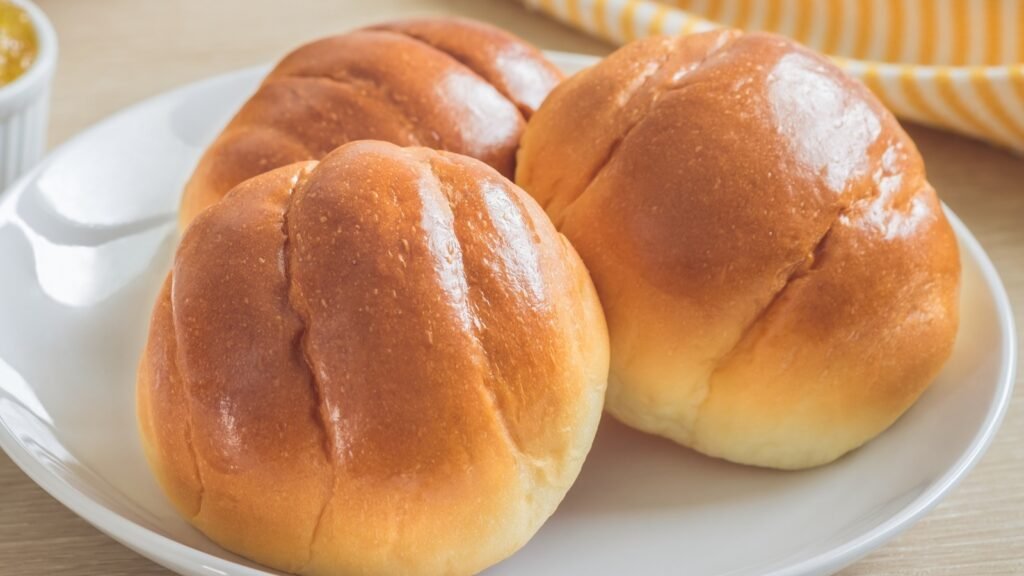How to Reheat Bread Correctly in the Microwave With Moisture?
I’ll never forget the disappointment of microwaving bread only to end up with a tough, rubbery texture that was worse than when it started. After years of baking professionally and testing countless reheating methods, I discovered that controlled moisture is the secret to perfect microwave bread revival. This technique to reheat bread correctly in the microwave with moisture has transformed how I approach leftover bread and can bring even day-old bread back to near-fresh quality.
Why Moisture Control is Crucial for Microwave Bread Reheating
Understanding the science behind bread texture restoration:
- Starch retrogradation: How bread stales through moisture redistribution
- Steam rejuvenation: Moisture rehydrates starch molecules
- Texture preservation: Prevents protein over-coagulation
- Crust management: Maintains crispness while softening interior
- Even heating: Prevents tough spots and rubbery texture
Key Bread Science Terminology
- Starch gelatinization: Initial cooking process during baking
- Retrogradation: Starch recrystallization that causes staling
- Gluten network: Protein structure that gives bread texture
- Crumb structure: Internal arrangement of air pockets
- Crust formation: Maillard reaction and caramelization products
Step-by-Step Moisture-Controlled Reheating
Preparation and Equipment
- Bread assessment: Determine freshness and type
- Moisture source: Damp paper towel or water spray
- Container selection: Microwave-safe plate or paper towel
- Covering material: Additional paper towel or microwave-safe lid
The Moisture Method Process
- Dampen paper towel: Use cold water and wring out excess
- Wrap bread loosely: Cover completely but not tightly
- Alternative method: Place damp towel underneath bread
- Microwave timing: 10-15 seconds for slices, 20-30 for rolls
- Check progress: Feel for warmth and flexibility
- Rest briefly: Let stand 1 minute for moisture distribution
- Final texture check: Should be soft and warm, not soggy
Pro Tip: For crusty breads, leave crust exposed to maintain crispness while softening interior
Bread Type Reheating Guide
| Bread Type | Moisture Level | Heating Time | Special Instructions |
|---|---|---|---|
| Sandwich bread | Medium dampness | 10-15 seconds | Wrap completely |
| Baguette/French | Light dampness | 15-20 seconds | Damp towel underneath only |
| Rolls/Buns | Medium dampness | 20-30 seconds | Wrap individually |
| Croissants | Light dampness | 10-12 seconds | Very gentle wrapping |
| Bagels | Medium dampness | 25-35 seconds | Cut in half first |
The Science Behind Moisture Reheating
Understanding the physical changes:
- Starch rehydration: Water molecules re-enter starch structures
- Protein relaxation: Gluten network softens with moisture and heat
- Steam penetration: Moisture transfers heat gently and evenly
- Crust protection: Controlled moisture prevents leathery texture
- Aroma revival: Volatile compounds reactivate with warmth
Advanced Techniques
For perfect results every time:
- Ice cube method: Place ice cube in cup alongside bread
- Water spray: Light misting directly on bread surface
- Herb infusion: Add herbs to water for flavored steam
- Double towel: One damp, one dry for perfect moisture control
Troubleshooting Common Issues
Problem: Bread becomes tough
Solution: Use less moisture and shorter heating time
Problem: Soggy texture
Solution: Reduce moisture and let stand longer after heating
Problem: Uneven heating
Solution: Arrange in single layer and rotate halfway
Problem: Crust too soft
Solution: Leave crust exposed to microwave directly
Bread Variety Considerations
Different types require specific approaches:
- Artisan breads: Require careful moisture control to preserve crust
- Sweet breads: Can become gummy if over-moistened
- Whole grain: May need extra moisture due to higher fiber
- Gluten-free: Often require less time as they heat faster
FAQs
Q. Why does microwave reheating usually make bread tough?
A. Microwaves excite water molecules, causing rapid evaporation that can over-cook proteins and create a tough, rubbery texture.
Q. Can I use this method for frozen bread?
A. Yes, but increase time slightly and use more moisture to account for ice crystal melting.
Q. How long does reheated bread stay fresh?
A. Reheated bread should be eaten immediately as it stales faster than fresh bread.
Q. Will this work with toasted bread?
A. No, toasting changes the starch structure permanently – this method only works with untoasted bread.
Q. Can I reuse the paper towel?
A. It’s best to use a fresh paper towel each time for food safety and consistent results.
Historical Context
Bread preservation and reheating:
- Traditional methods: Oven refreshing or steam revival
- Microwave era: Initial disappointing results led to experimentation
- Professional bakeries: Steam injection ovens for perfect refreshment
- Home adaptation: Developing accessible methods for home cooks
Alternative Methods
When microwave isn’t available:
- Oven method: 350°F for 5-10 minutes with steam pan
- Steamer method: Excellent for moist heat application
- Toaster oven: Good for small quantities with control
- Skillet method: Creates nice crust while warming interior
Safety Considerations
- Temperature check: Ensure bread reaches at least 140°F (60°C)
- Steam caution: Open wrapping away from your face
- Container safety: Use only microwave-safe materials
- Burning risk: Bread can overheat quickly – use short intervals
Final Thoughts
The moisture-controlled microwave method is a game-changer for bread lovers who want quick results without sacrificing quality. I’ve used this technique to reheat bread correctly in the microwave with moisture in both home and professional settings, and it consistently delivers beautifully refreshed bread. While it won’t completely replicate fresh-from-the-oven bread, it comes remarkably close for a method that takes less than a minute.
Remember: the key is balancing moisture carefully and using very short heating intervals. With practice, you’ll develop a feel for exactly how much moisture and time each bread type needs.

